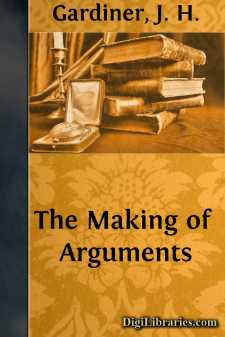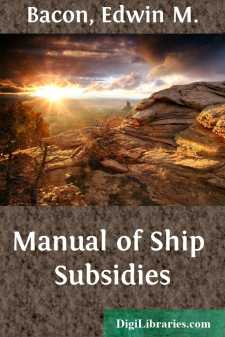Non-Classifiable
- Non-Classifiable 1768
Non-Classifiable Books
Sort by:
CHAPTER ITHE PROBLEM OF LIFE Before we proceed to outline Eucken's philosophical position, it will be well if we can first be clear as to the special problem with which he concerns himself. Philosophers have at some time or other considered all the problems of heaven and earth to be within their province, especially the difficult problems for which a simple solution is impossible. Hence it is,...
more...
by:
Esther Singleton
PRINCE KROPOTKINE The Russian Empire is a very extensive territory in eastern Europe and northern Asia, with an area exceeding 8,500,000 square miles, or one-sixth of the land surface of the globe (one twenty-third of its whole superficies). It is, however, but thinly peopled on the average, including only one-fourteenth of the inhabitants of the earth. It is almost entirely confined to the cold and...
more...
CHAPTER I THE HOUSE OF BONDAGE For a considerable number of years I had been a resident in London, which city I regarded alternately as my Paradise and my House of Bondage. I am by no means one of those who are always ready to fling opprobrious epithets at London, such as 'a pestilent wen,' a cluster of 'squalid villages,' and the like; on the contrary, I regard London as the most...
more...
by:
J. H. Gardiner
CHAPTER IWHAT WE ARGUE ABOUT, AND WHY 1. What Argument is. When we argue we write or speak with an active purpose of making other people take our view of a case; that is the only essential difference between argument and other modes of writing. Between exposition and argument there is no certain line. In Professor Lamont's excellent little book, "Specimens of Exposition," there are two...
more...
CHAPTER I. SPERMATORRHŒA—IMPOTENCY—STERILITY. The Baneful Effects and Consequences of Masturbation, Marriage Excesses, Venereal and Urinary Diseases on Boys and Men. Could we read the heart of every man and boy we pass upon the street, how few—how very few—there are that would not reveal sickening pictures of lust, disease, melancholy and insanity. Charnel-houses of sin and lust—sloughs of...
more...
by:
John M. Garvan
CHAPTER I EXPLANATION OF TERMS "EASTERN MINDANÁO" Throughout this monograph I have used the term "eastern Mindanáo" to include that part of Mindanáo that is east of the central Cordillera as far south as the headwaters of the River Libagánon, east of the River Tágum and its influent the Libagánon, and east of the gulf of Davao. THE TERM "TRIBE" The word "tribe" is...
more...
THE MANOR HOUSE OF LACOLLE. BY W.D. LIGHTHALL, K.C. The Manor House of the Seigniory of Lacolle or De Beaujeu is situated in a retired neighborhood, on the New York State border-line about four miles south-west of Lacolle Village, and one mile north of the village of Champlain, N.Y. and about forty miles from Montreal. The highway from Lacolle to Champlain runs through the property. The traveller from...
more...
by:
Edwin M. Bacon
CHAPTER I INTRODUCTORY The term subsidy, defined in the dictionaries as a Government grant in aid of a commercial enterprise, is given different shadings of meaning in different countries. In all, however, except Great Britain, it is broadly accepted as equivalent to a bounty, or a premium, open or concealed, directly or indirectly paid by Government to individuals or companies for the encouragement or...
more...
NEW JOURNAL OF MARIE BASHKIRTSEFF JANUARY, 1873 (Marie was then twelve years old.) I must tell you that ever since Baden I have thought of nothing except the Duc de H——. In the afternoon I studied. I did not go out except for half an hour on the terrace. I am very unhappy to-day. I am in a terrible state of mind; if this keeps on, I don't know what will become of me. How fortunate people who...
more...
Genus AMŒBA Auct. The pseudopodia are lobose, sometimes absent, the body then progressing by a flowing movement; the body consists of ectoplasm and endoplasm, the latter being granular and internal, the former hyaline and external. There is always one nucleus and one vacuole, but both may be more numerous. Reproduction takes place by division or by spore-formation. Fresh-water and marine. Fig. 1.—...
more...











